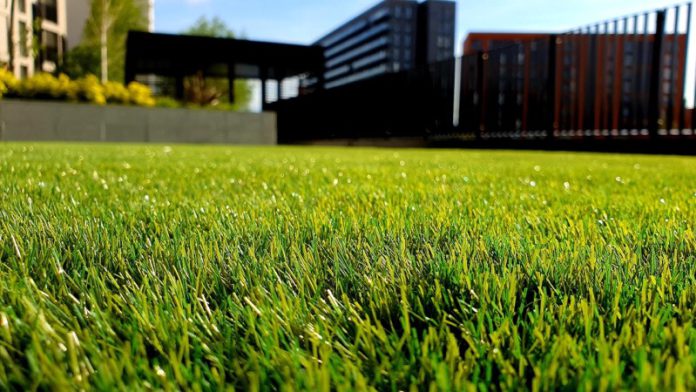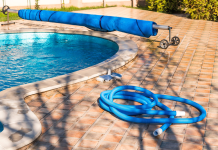Healthy lawns can boost your mood and give your family safe spaces to relax and play in. They often increase the value of your home and are great for the environment. For example, lawns filter out dust, pollen, pollutants, and smoke particles to improve air quality. Each blade of grass matters. Of course, it is not always easy to keep your yard looking beautiful. These tips should help.
1. Remember Pest and Fungal Control
Beetle larvae (grubs), chinch bugs, and sod webworms are among the pests that can seriously damage your lawn. They feed on grass roots and leaves. Insecticides help control these pests.
Fungal diseases such as brown patch and dollar spot can also cause damage. Apply the best fungicides for lawns as soon as symptoms appear. Waiting may allow the disease to spread and damage your yard further. Warm and humid conditions are optimal for this type of spread, and it can lead to grass discoloration, wilting, and even death.
Signs of fungal disease include yellow or brown patches, powdery mildew, and thinning grass. If the disease has reached a certain point, you may have to remove and replace the turf. The disease could also spread to nearby yards.
2. Test Your Soil
If grass, flowers, and other plants don’t seem to thrive on your lawn, a soil test can do wonders. You get information about your soil’s acidity (pH) and the presence of nutrients, among other things.
If your soil is too acidic or alkaline, you can correct that by adding lime or sulfur respectively. You can also use fertilization to address any nutrient deficiencies the test shows.
3. Fertilize With Purpose
Use fertilizers that match your soil’s nutrient needs. All lawns need nitrogen, phosphorus, and potassium, but the ratio of these nutrients depends on the type of grass you have. Slow-release fertilizers are best because they give your lawn a steady supply of nutrients over time.
4. Control Your Weeds
Every time you go in your yard or garden, look for new growths of weed seedlings or plants. Weed by hand if possible when you notice these invasions. You can use a hoe to eliminate weed seedlings that are too small for you to pull. Once weeds have set seeds and spread, it is more difficult to get rid of them.
Mulch is an excellent way to prevent or minimize weed growth. You can also use herbicides, but keep in mind that one or two applications of herbicide may be enough to kill an entire lawn. Look for products that offer pre- and post-emergent herbicide control and that spare your grass.
5. Aerate in the Spring or Fall
Aerate at least once a year in the spring or fall when your grass is actively growing. Use core aerators to remove small plugs of soil from the lawn. This technique allows air, water, and nutrients to penetrate the soil more easily.
6. Water Your Yard
Water deeply but infrequently to encourage deep root growth. Your lawn’s soil type, weather, and grass species determine the amount of water it needs, but a general rule is to give it 1 to 2 inches of water per week.
7. Mow According to Grass Type
The type of grass you have also determines the height at which you mow your grass. You mow warm-season grasses such as Bermuda and Zoysia shorter, about 1 to 2 inches. If you’re using a reel mower, 0.75 inches should be fine. Mow cool-season grasses such as Kentucky bluegrass and fescue to a height of 2.5 to 3 inches.
8. Overseed to Encourage Growth and Fill in Spots
Over the months or years, grass can thin out due to foot traffic, disease, and other factors. Overseed with compatible grass seed to fill in bare spots and promote healthy growth. Rake the soil lightly before you overseed to ensure good seed-to-soil contact.
9. Mulch But Not Too Much
Organic mulches such as shredded leaves and grass clippings can be great for retaining moisture, reducing weed growth, and providing natural fertilization. However, too much mulch may smother your grass and lead to fungal growth.
You can use woody and harder mulches in areas where you won’t dig much. In flower beds that require more frequent digging and remulching, you may want to go with straw mulch, manure, or green manure.
10. Clean Up Regularly
Ongoing maintenance and cleanup of your yard and lawn care tools are essential. For example, raking debris and fallen leaves can eliminate potential breeding grounds for pests and diseases.
Also, clean and sharpen your mower blades twice per season or after 25 hours of use to keep them in good condition. Sharpen the blades after you hit rocks, too. It doesn’t take much for rocks to cause dents and nicks.
Both preventative and ongoing care are essential for lawn health. If you incorporate these 10 lawn care tips into your maintenance routine, you should be well on your way to a lush and healthy yard.














